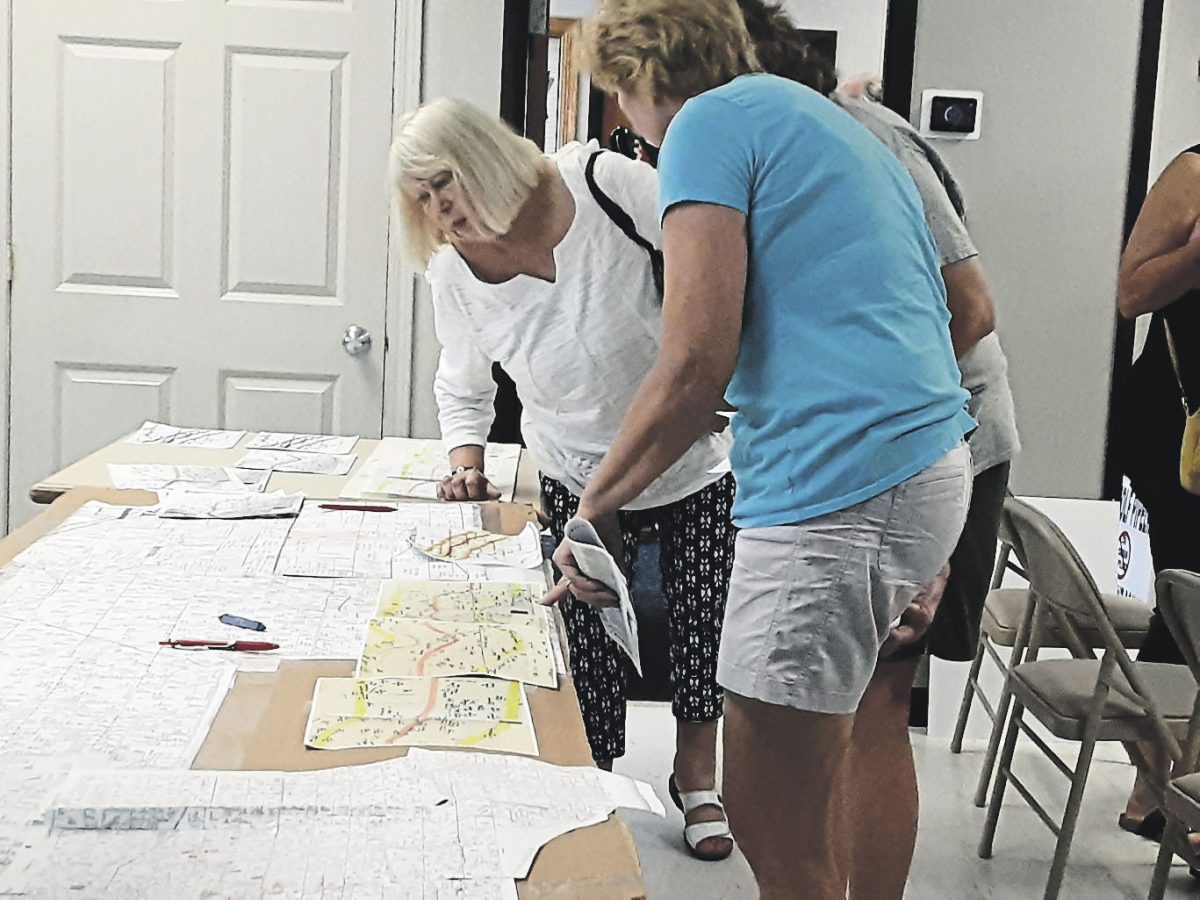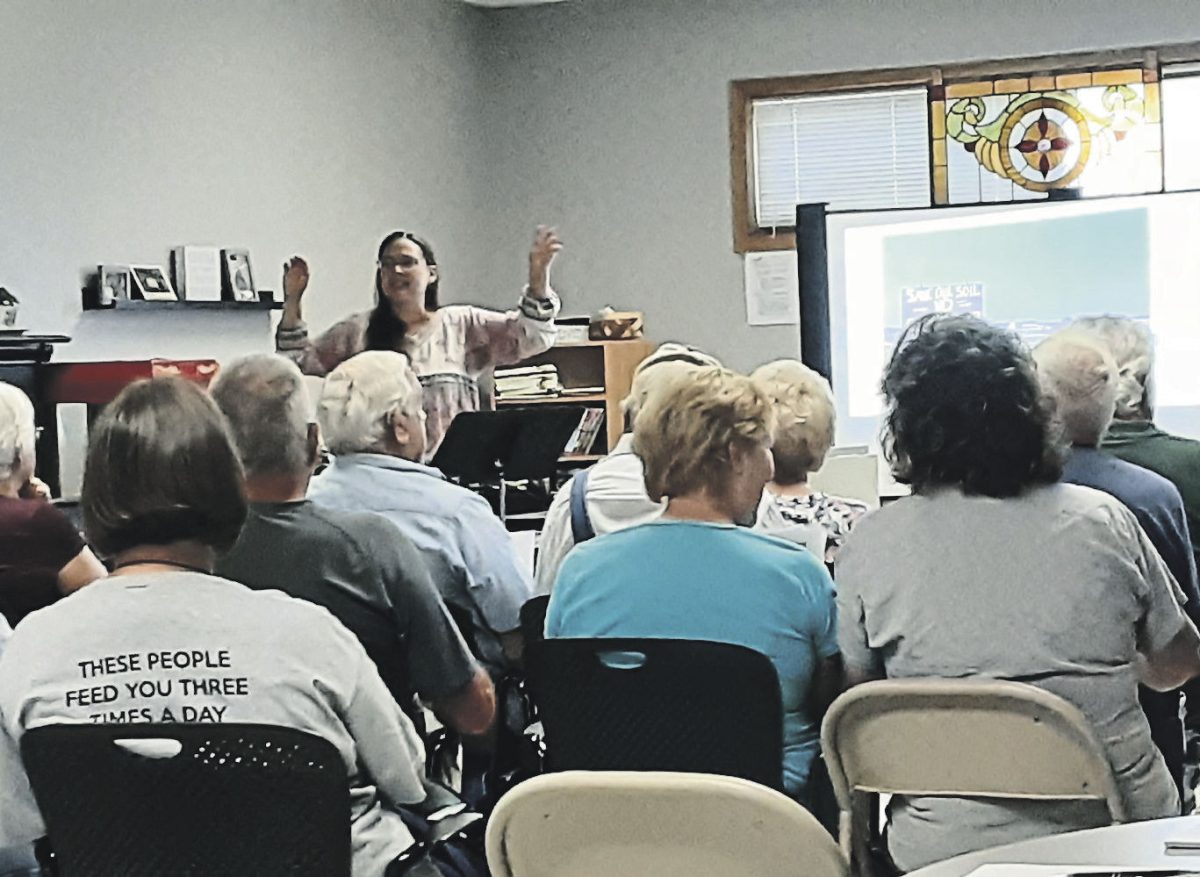More than 50 landowners and concerned citizens attended a neighbors visitingneighbors discussion on the Wolf Carbon Solutions pipeline at Southeast Linn Community Center Saturday, Aug. 27.
The discussion, which was non-partisan, brought up concerns with carbon sequestration pipelines.
The first pipeline that was proposed to go by the Mount Vernon and Lisbon communities was Navigator’s pipeline. Navigator pulled their project out of Linn County after not being able to connect with the ADM plant nearby. Shortly after Navigator announced plans to leave Linn County, Wolf Carbon Solutions announced a plan that would connect the nearby ADM biodiesel plant in Cedar Rapids to a carbon sequestration site in Illinois. Wolf Carbon Solutions has been working on that pipeline.
The pipeline proposed by Wolf Carbon Solutions would pass to the south of Mount Vernon and Lisbon, and crosses at times along the northern border of Johnson County and continues into Cedar County. While it does not pass as close to Mount Vernon and Lisbon as the proposed Navigator Pipeline, it could still prove a health issue for citizens in rural Mount Vernon and Lisbon.
Jessica Wiskus, who is running for state house, lead the discussion with a presentation about the dangers of carbon sequestration pipelines, if the item could be seen as a net positive for the state, and if the pipelines are necessary for the future of ethanol production in the state.
The first part of Wiskus’ presentation focused on the safety of pipelines, and repeated many of the statements from the pipeline discussion held back in November.
Carbon dioxide touted through these pipelines would be in a liquid format, and kept under pressure from the ethanol plant to the sequestration site underground. The pressure for the pipes would be 2000 pounds per square inch or higher.
Ruptures of the pipes could spill carbon dioxide into the environment around them, spelling potential harm for any adjacent landowners, their crops and anything living in that area. The pipeline rupture in Sartartia, Miss., was brought up as a cautionary tale once more of a known pipe rupture that sent people to hospitals after exposure to high levels of carbon dioxide, and much of the gas in these pipes would be at high concentrations of 92 percent or higher of carbon dioxide.
Sartartia saw a spill that amounted to 401 tons of carbon dioxide in eight minutes before the pipeline was shut down, and a town of roughly 42 people was impacted by the levels of carb on dioxide in the air.
While there have been calls for carbon sequestering pipes to be strengthened due to incidents like Sartartia, that legislation could take more than five years to implement, with new and older pipes remaining in existence until then.
“If we can’t build these pipelines safely, then why are we even allowing them to happen?” Wiskus said. “That’s just my opinion.”
When it came to the safety, Wiskus illustrated ADM’s own research into carbon sequestration when they conducted the science 2010 to 2014. In that study, carbon dioxide was stored underground near a facility in Dekalb, Ill.
EPA studies of that plant showed heightened carbon output for the four years the sequestration of carbon dioxide was conducted, due to the energy of trapping the gas and turning it into a liquid and transporting it underground.
“It was roughly a net neutral move for the company,” Wiskus said. “It takes so much energy to sequester carbon underground.”
ADM’s own reporting, Wiskus said, indicates that they know carbon sequestration is a low priority. For ADM, 70 percent of their carbon output comes from coal burning stations, and their focus is on moving to renewable energies to shrink their carbon output more than it is carbon sequestration pipelines.
Wiskus and other leaders of the cause were encouraging landowners who are opposed to the pipeline to keep up that opposition and talk to their neighbors. A project having opposition could tie up the project and force Wolf Carbon Solutions to proceed with eminent domain, which could prove costly to developing the pipeline.
Landowners who were saying no to the pipeline were also asked to mark their property in red along the proposed path of the pipeline in Linn, Cedar and Johnson Counties. Mike Daly had blown up what the suspected route through the area of southern Linn County from the Ely area to Mechanicsville might be, and what properties existed along those paths. The gooal was to show the level of opposition to the project locally.
The public information hearings for landowners in Linn, Cedar and Johnson counties were held earlier this week, meaning surveyors and land agents can now be in contact with landowners about getting potential easements for their properties. Any contact from land agents or surveyors that happened before Aug. 29 in the area was illegal and should be reported to the Iowa Utilities Board.
Wiskus said that while land agents can be kept off properties for those who oppose the project, surveyors do have a right to inspect properties.
Wiskus and others are also trying to work with county supervisors and other legislators to establish protections similar to other states, mainly with keeping the distance the pipelines need to be kept from schools and city borders, as well as proximity to residences.
Just like Navigator, citizens are also encouraged to voice their opposition to the proposed Wolf Carbon Solutions plan on the Iowa Utilities Board website and selecting the Wolf Carbon Solutions project as one they are opposed to.
Lining up the needed easements for the project may take more than a year for Wolf Carbon Solutions to complete, based on the number of landowners impacted by this pipeline.
Jessica Wiskus presents information on the Wolf Carbon solutions pipeline ahead of the public information meetings held early this week.


